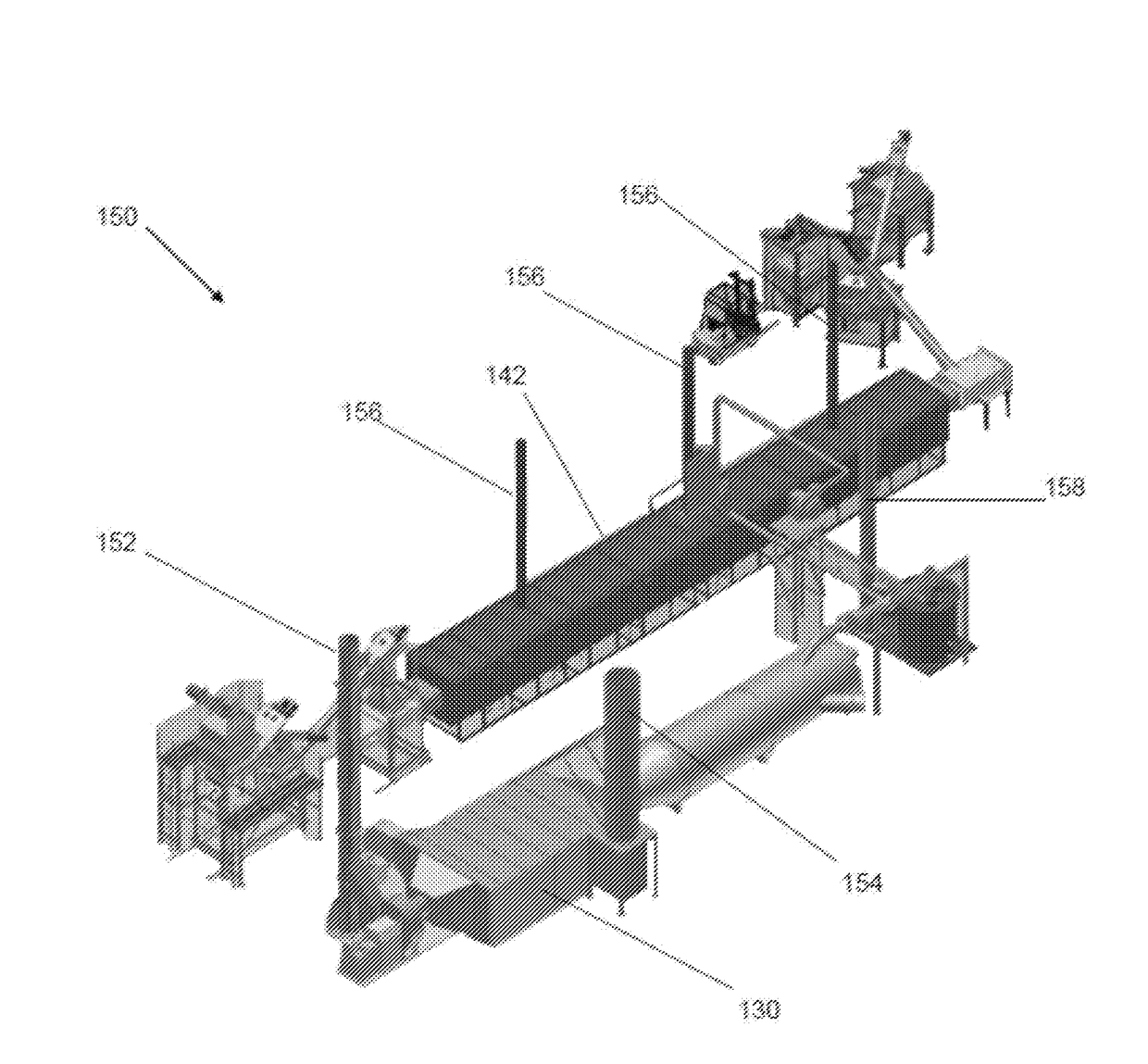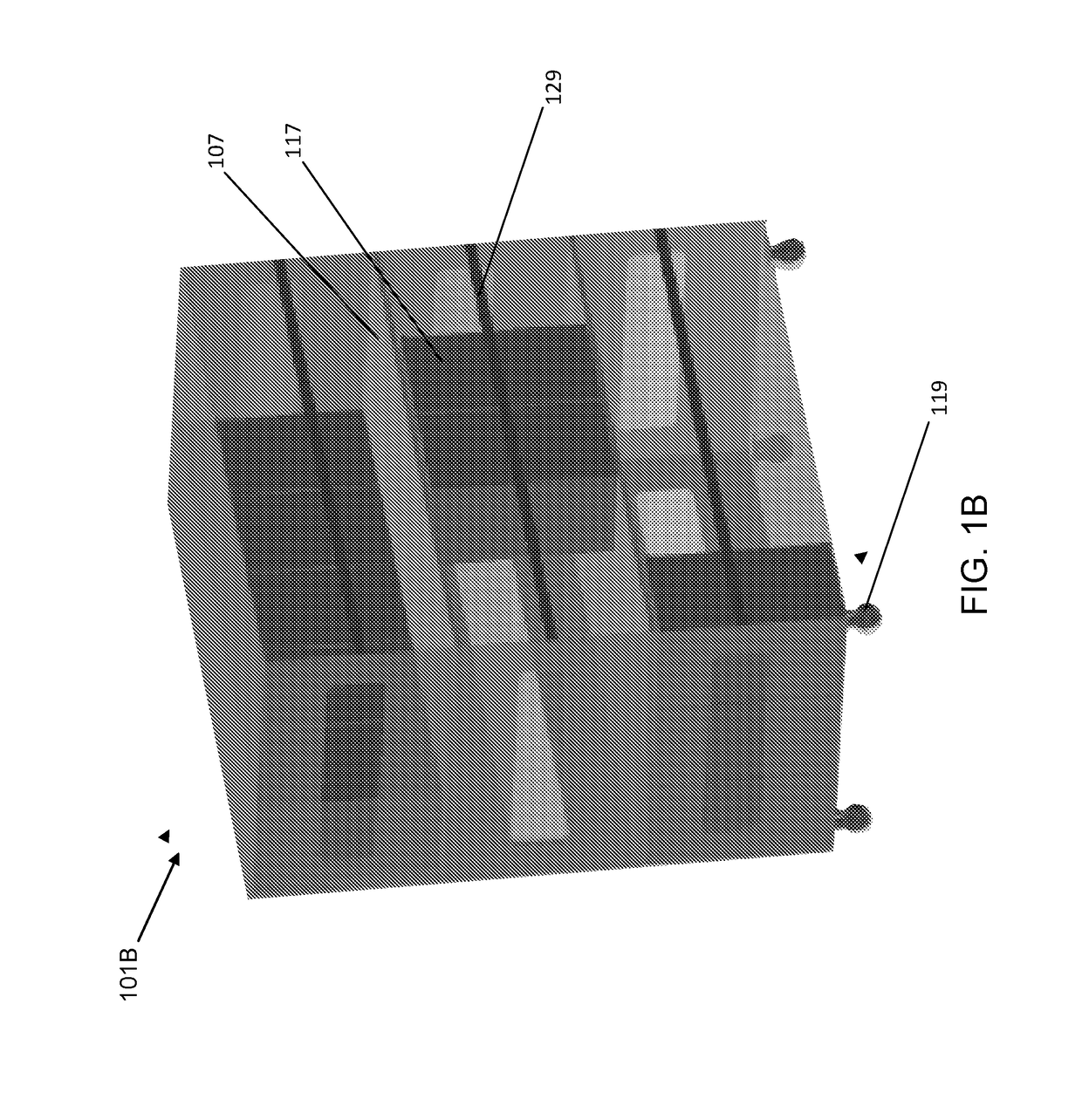Integrated collection of infectious waste and disposal thereof
a technology for infectious waste and collection, applied in the field of infectious waste treatment system, can solve the problems of infectious waste which would otherwise have value through processing being sent to landfill or incinerated off-site at considerable expense, and the method of disposing infectious waste at the expense of energy and usable byproducts, and justifying the replacement of conventional medical waste incineration system
- Summary
- Abstract
- Description
- Claims
- Application Information
AI Technical Summary
Benefits of technology
Problems solved by technology
Method used
Image
Examples
example 1
Station to Treatment Facility Delivery System—Drum Cart
[0030]A cart as described with respect to an embodiment of FIG. 1A is configured to hold twelve 210 litter fiber drums with 1.5-mil polyethylene liners. The average fiber drum weight is 33 kg maximum capacity at 160 kgs / m3 of medical waste with total weight of 41 kgs. Drums are loaded onto portable drum carts and safely secured into position for transport. A 16 meter long trailer of a transport vehicle can hold up to 18 carts that hold a total of 216 drums with a total weight of 8,820 kgs. The trailer may be manually unloaded in less than three hours based on an estimate of ten minutes per cart. The two layers of stored drums effectively doubles transfer station and treatment center floor space storage, where each cart provides sixty square feet of equivalent storage space. The drum cart may be manually rolled into unloading station at the treatment center where an automated system pushes the drums into the shredder pre-feed sys...
example 2
Station to Treatment Facility Delivery System—Box Cart
[0031]A cart as described with respect to an embodiment of FIG. 1B is configured to hold forty five boxes, the boxes each measuring 45×45×90 cm with 1.5-mil polyethylene liners. In a specific embodiment the boxes are made of cardboard. The average box weight is 27 kgs maximum capacity at 160 kgs / m3 of medical waste with total weight of 29 kgs. Drums are loaded onto portable box carts and safely secured into position for transport. A 16 meter long trailer of a transport vehicle can hold up to 11 carts that hold a total of 495 boxes with a total weight of 14,145 kgs. The trailer may be manually unloaded in less than two hours based on an estimate of ten minutes per cart. The three layers of stored boxes effectively doubles transfer station and treatment center floor space storage, where each cart provides 105 square feet of equivalent storage space. The box cart may be manually rolled into unloading station at the treatment center ...
example 3
—Medical Waste Processing and Safe Thermal Conversion
[0032]As described in conjunction with FIGS. 1-5 and in FIG. 8, a process for generating char and the recovery of metal and glass is as follows. A carbonizer 142 receives shredded waste material from a sealed feed material system 126 and the waste material is fed to a reactor furnace 160 that may in a specific embodiment be a drag conveyor reactor. Off-gas from the reactor furnace 160 is treated with a thermal oxidizer 130, and waste heat generated in the thermal oxidizer 130 is supplied via a waste heat recovery system 162 with a blower 134 into the reactor 160 along with supply gas 136 for the burners in the reactor 160. The reactor outputs a continuous char discharge 164 along with recoverable metal and glass. In a specific embodiment, the waste is heated at approximately 730° C. to 790° C. for 30 minutes in the reactor. The resultant organic waste (approximately 75% of output) is converted to gas phase and oxidized in the ther...
PUM
| Property | Measurement | Unit |
|---|---|---|
| weight | aaaaa | aaaaa |
| weight percent | aaaaa | aaaaa |
| pressure | aaaaa | aaaaa |
Abstract
Description
Claims
Application Information
 Login to View More
Login to View More - R&D
- Intellectual Property
- Life Sciences
- Materials
- Tech Scout
- Unparalleled Data Quality
- Higher Quality Content
- 60% Fewer Hallucinations
Browse by: Latest US Patents, China's latest patents, Technical Efficacy Thesaurus, Application Domain, Technology Topic, Popular Technical Reports.
© 2025 PatSnap. All rights reserved.Legal|Privacy policy|Modern Slavery Act Transparency Statement|Sitemap|About US| Contact US: help@patsnap.com



